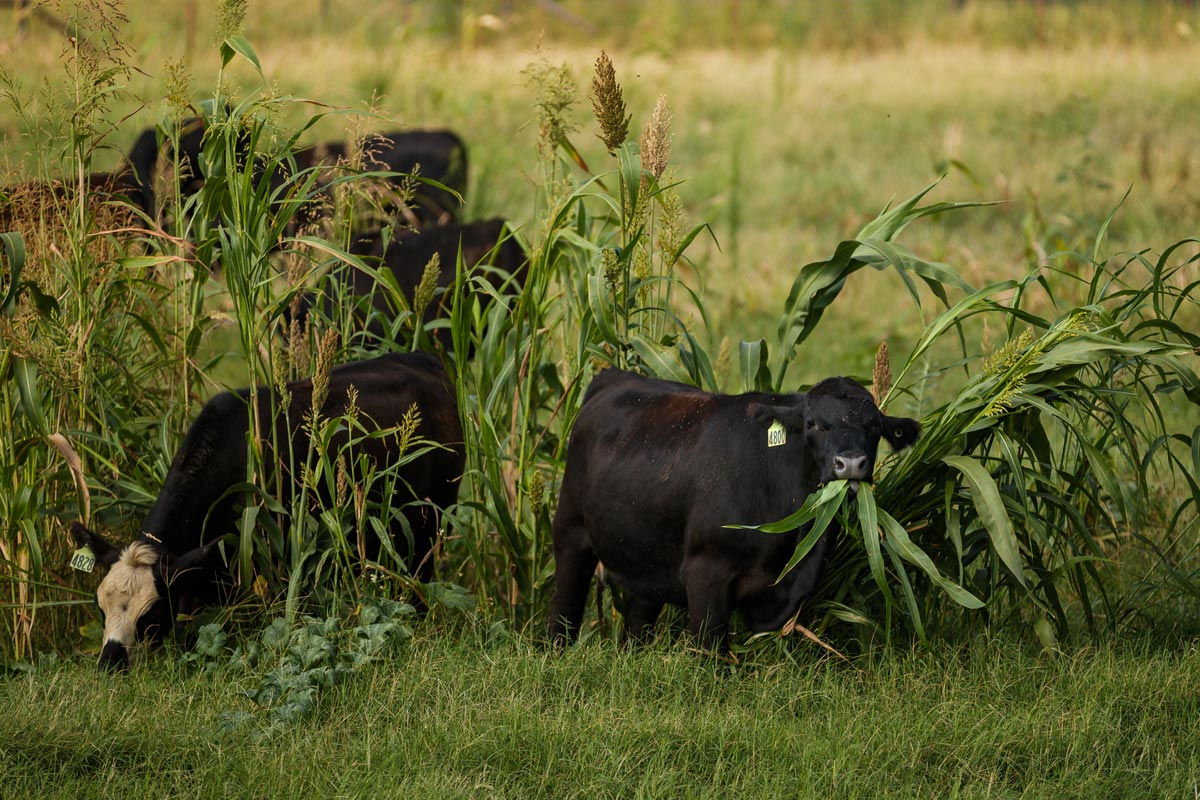In the realm of sustainable farming practices, regenerative agriculture has really come to the forefront of our attention. It provides hope with a holistic approach to land stewardship that goes beyond mere sustainability to actively restore and regenerate ecosystems. But what exactly is regenerative agriculture, and why does it matter?
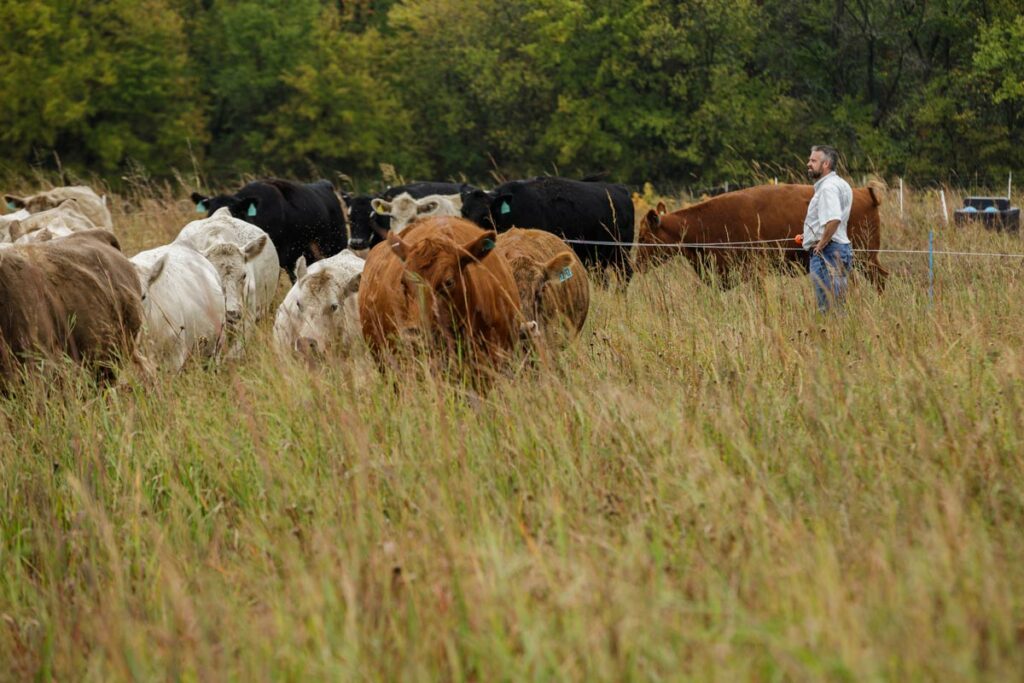
About Jim Johnson
Jim Johnson has been a senior regenerative ranching advisor at Noble Research Institute since 1999. He received a bachelor’s degree in soil science from the University of Illinois and a master’s degree in agronomy from Oklahoma State University. He then worked in various plant breeding programs in Nebraska, Texas, and Oklahoma.
His interests include helping ranchers improve their land using soil health principles and ecosystem processes. He has 28 years of ag industry experience, specializing in cover crops, no-till, and soil testing.
Noble Research Institute, LLC is an independent nonprofit agricultural research organization dedicated to delivering solutions to great agricultural challenges.
Understanding Regenerative Agriculture
Regenerative agriculture is a farming and grazing approach that focuses on restoring and enhancing the health of the soil rather than just sustaining its current state.
Regenerative agriculture prioritizes practices that mimic natural ecosystems, working with nature rather than against it. At its core, it seeks to improve soil health, increase biodiversity, sequester carbon, and enhance water retention while producing nutritious food.
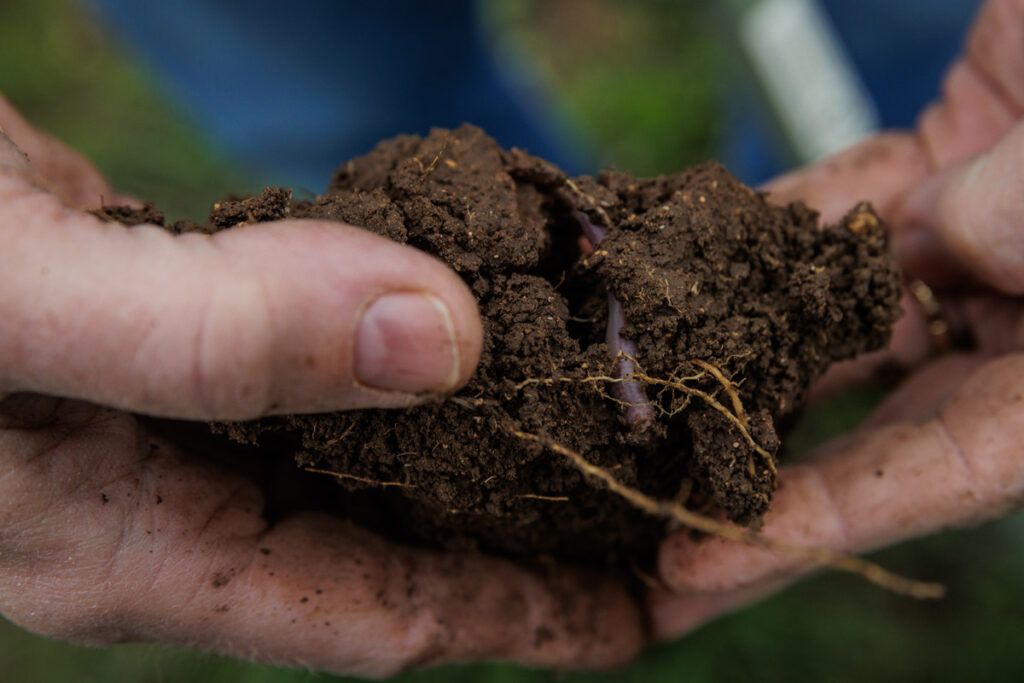
The Benefits of Soil Health
Soil health lies at the heart of regenerative agriculture, and its benefits ripple out to people, food, and the planet. Healthy soil acts as a living ecosystem, teeming with diverse microorganisms that support plant growth and resilience.
Jim shares that the basis for healthy soil comes down to the carbon and organic matter in the soil. This means more nutrients available to the plants, more nutrition in the crops for ourselves and our livestock, and therefore, better health for ourselves when we consume these things.
When soil is nurtured through regenerative practices, it becomes more fertile, leading to increased crop yields, better plant diversity and higher-quality produce.
Healthy soil is also better able to absorb and retain water, reducing the risk of erosion and runoff and helping to mitigate the impacts of droughts and floods.
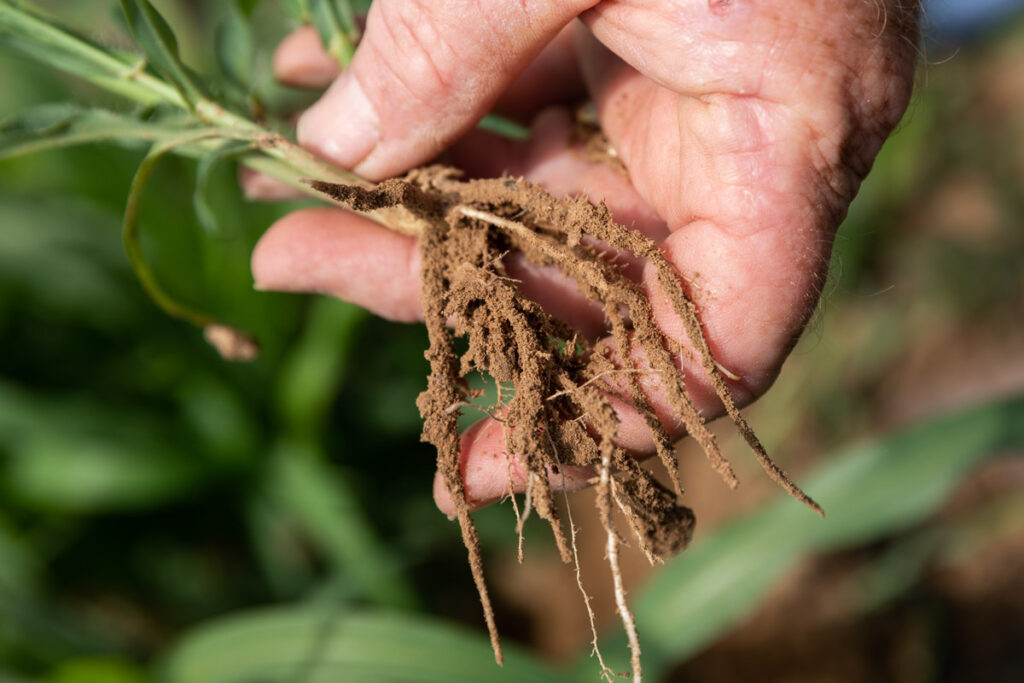
Methods for Testing Soil
Many of the standard soil tests use the Albrecht Model of testing soil. The Albrecht Model uses strong acids to extract the nutrients from the soil. With that data, they’ll give you results, based on research and correlations, as to what nutrients you need to add to your soil.
Jim shares a newer test called the Haney test, which uses weak acids that mimic the root exudates. This test was developed by Dr. Rick Haney at the USDA Agriculture Research Service in Temple, Texas. By mimicking what the root actually encounters in the soil, the nutrients available to the plant can be tested more accurately. This is opposed to the higher-acid Albrecht Model tests that create conditions that plant roots never encounter in the real world.
To take this one step further, the Haney test also measures nutrients that are available not only in the organic matter but also in the microbiome of the soil. We know there are all kinds of bacteria, fungi, protozoa and other microscopic organisms in the soil. These things usually live very short lives, then die and recycle their nutrients. Those nutrients from the dead microorganisms are available to the plants. So, the Haney test can actually measure the biological nutrients that are available in the soil, which a conventional test doesn’t measure.
In short, the Albrecht Model measures the chemistry and the Haney test measures both the chemistry and the biology in the soil.
To ensure your soil test is being run through the Haney test, you’ll need to inquire where your soil sample is being sent for testing. Jim also recommends doing a simple search for “Soil testing labs – Haney test” to find results.
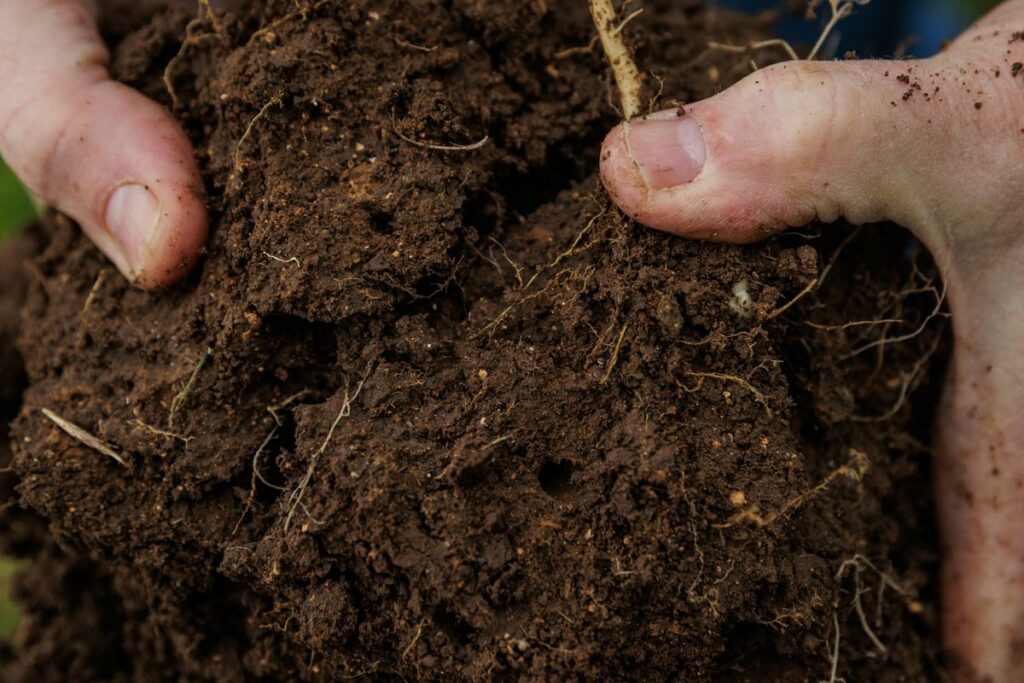
The Six Soil Health Principles
Regenerative ranching encompasses six key principles aimed at improving soil health:
- Context: Tailor management practices to the specific needs of the ecosystem, considering factors like historical context, climate, soil type, and landscape.
- Keep Soil Covered: Cover the soil with vegetation or mulch to protect it from erosion and retain moisture. This may require researching better options of grass species that will grow best in your climate.
- Minimize Soil Disturbance: Reduce tillage and avoid practices that disrupt the soil structure, such as excessive plowing.
- Keep Living Roots in the Ground: Maintain living plants in the soil year-round to support microbial activity and soil structure.
- Maximize Plant Diversity: Promote biodiversity by growing a variety of crops and fostering a range of habitats for beneficial organisms.
- Integrate Livestock: Introduce animals into cropping systems to mimic natural grazing patterns and cycle nutrients.
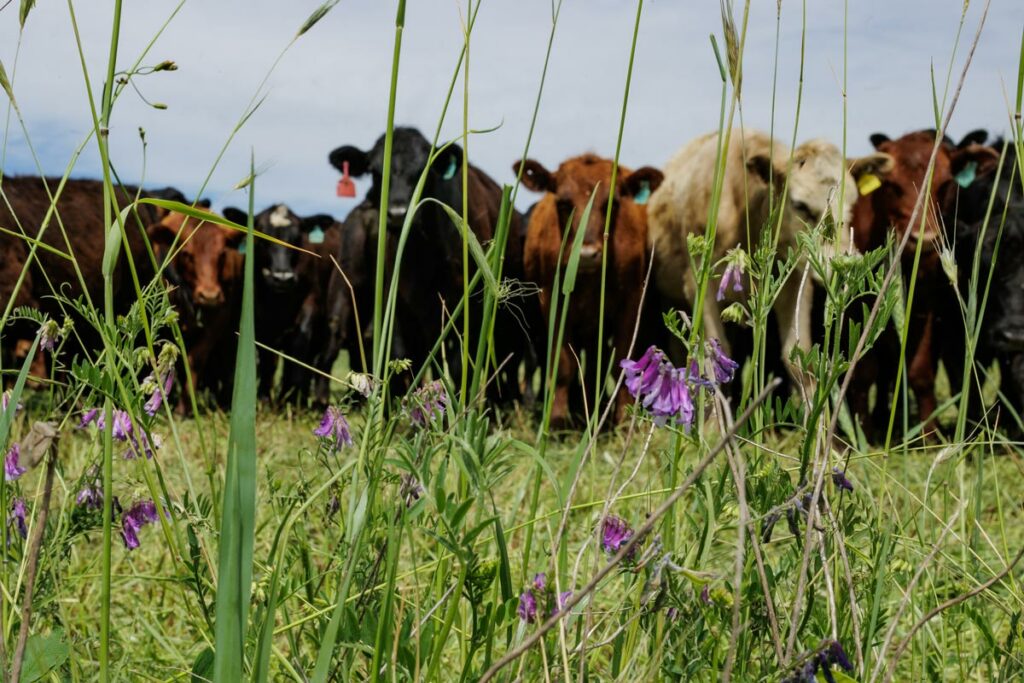
Implementing Regenerative Practices on a Homestead
For homesteaders seeking to implement regenerative practices on a smaller scale, such as those with 5 acres or less, the principles of regenerative agriculture remain just as applicable. In fact, these practices can be particularly well-suited to smaller plots of land, where careful management can yield significant results.
Of the six soil health principles, minimizing soil disturbance, keeping the soil surface covered, and maximizing diversity are especially crucial for homesteaders. These practices help to maintain soil structure, reduce erosion, and foster a resilient ecosystem that can support a variety of crops and livestock.
Even homesteaders with as little as half an acre of land can benefit from regenerative practices. By incorporating techniques such as no-till gardening, cover cropping, and rotational grazing, they can improve soil health, increase productivity, and contribute to the overall sustainability of their operation.
If you’re working with neglected pasture that needs rehabilitation, it can take upwards of 3-5 years to see improvement (drought and weather-dependent). You should notice improvements within the first year of implementing regenerative agriculture practices; however, it won’t all be fixed in one fell swoop.
In conclusion, regenerative agriculture holds immense promise for transforming our food systems and restoring the health of our planet. By embracing the principles of regenerative ranching, both large-scale farms and small homesteads alike can play a role in cultivating resilience and abundance for generations to come.
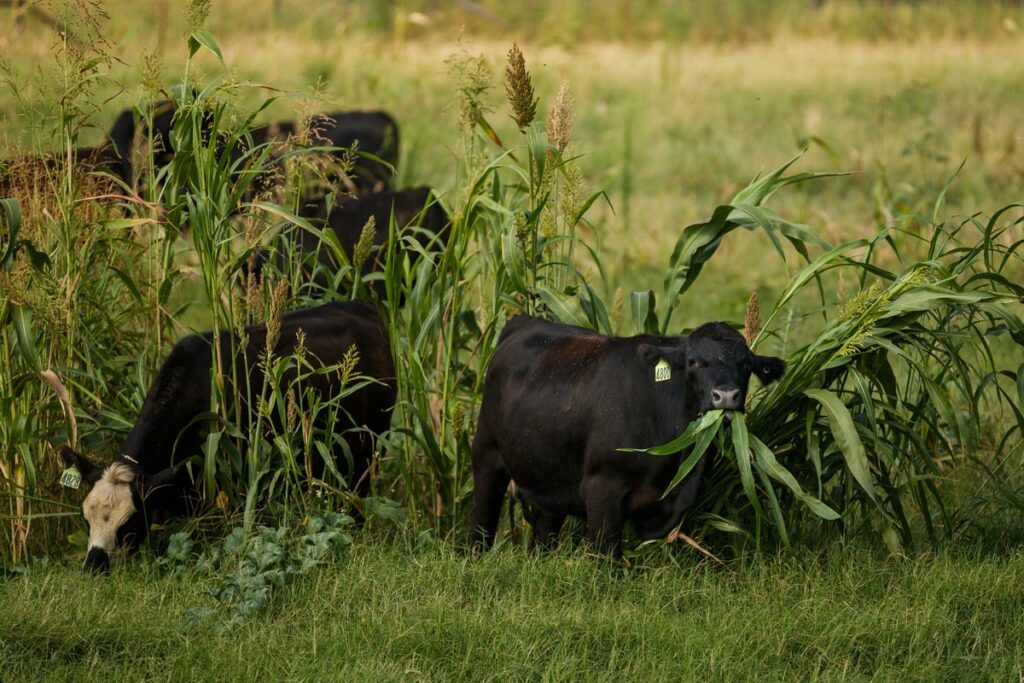
Where to Find Jim & Noble Research Institute
If you’d like to learn more about regenerative ranching and other Noble resources, check out the links below:
[fusebox_transcript]
